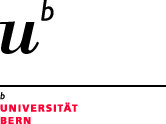Authors: AAE team
Customised solutions were developed within a very short time so that all tests requested by partners and clients could and did take place. For a broad range of quite different exams, the IML clarified legal questions, ensured safety and adapted exam formats. A few examples:
Written exams
In the run-up to exams, their compilation and quality assurance, the IML created a new approach as a result of the pandemic. Multi-participant workshops, which would normally have been held as a face-to-face event, to create multiple-choice questions for exams in the medical field were successfully held online using video conferencing software.
The written exams themselves were in part relocated to large exhibition halls so that all test candidates could sit sufficiently distanced for safety. Masks were made available at the entrances and the routes to the exam seats were planned to maintain adequate distance. During the exams it was compulsory to wear a mask and for the second half of the exam time the candidates were given a new mask. These protective measures have been worthwhile and were generally well accepted. In the exams held to date during the Covid 19 pandemic, the candidates have all been very disciplined and complied with the rules. Some even expressed their thanks for the health protection measures put in place. The IML employees have also benefited from the Covid-19 measures. The step count involved in preparing and clearing the examination materials in the large halls (table numbers, examination documents, writing utensils and protective masks) has added up - a real fitness program.
Other written exams were carried out using web-based software developed at IML (MEASURED web extension). The candidates were able to take the exam at home on their private computer. In a third variant, written exams were carried out using tablet computers, but currently only with a small number of candidates in order to guarantee the necessary quarantine times for the devices until their next use. The sensitive touch screens of the tablets cannot easily be disinfected. Since paper documents can also not be so readily disinfected, all examination documents were first quarantined to protect employees until they could be processed.
Oral exams
During oral exams, there is naturally a lot of discussion, which increases the risk of transmission of SARS-CoV-2. Before the start of the exam, the candidates were divided into groups and these groups were then examined with a time delay, which meant that larger gatherings of candidates in the reception area could be reduced. Here, too, masks were distributed for all those present and disinfectant was provided. In addition, the number of people in the examination rooms was reduced. In normal times, there are three people in the room for an oral exam: the candidate, examiner and co-examiner. Now, under Covid-19, the examiner appeared via Zoom and conducted the exam via on-line video. Oral exams in Bern were designed as a "post run", with 8 minutes of examination time allowed per post. When changing between posts, the doors of the examination rooms were opened for the candidates by the employees. This helped the candidates ‘keep time’ and saved them from having to disinfect their hands after using the door handles, which would have slowed them down. So that the candidates did not get too close to each other, markings with spacing and directions were placed on all floors. The planning and preparation necessary for these measures were extremely time-consuming, but also enabled the test to be carried out successfully and safely for everyone involved.
Clinical practical exams
Practical clinical tests were also adapted to the pandemic situation. After ensuring the health protection of all involved, the second most important goal was to maintain the direct interaction of the candidates with the simulation patients (SP), so that it was still possible to assess the ability of the candidates, e.g. a doctor-patient consultation was carried out in a patient-friendly manner, in a given time and that critical aspects were addressed. Specifically, the candidates had to demonstrate how they would take an anamnesis focused on the patient's suffering and the diseases most likely behind it, make a diagnosis and explain how to proceed to the patient. Only the assessment of physical examination techniques, which is an essential part of the medical work, had to be compromised during the exams. While some physical examinations could be carried out and assessed with adapted protective and hygiene measures, others had to be replaced by special simulation techniques such as the use of body models (which were disinfected after each use) or pathological findings were indicated as soon as the candidate indicated they wished to conduct a certain investigation. Health protection measures for practical examinations were achieved in a similar way to the oral examinations, namely through logistical approaches to avoid large flows of people by dividing the candidates into smaller examination groups and preventing large gatherings before the start of the examination.
Conclusion
It is a great success that the IML, together with its partners and clients, has succeeded in delivering all the required exams while ensuring the health and needs of the candidates, simulation patients and examiners, as well as safely accommodating the various exam formats under the difficult conditions of the Covid-19 pandemic.
© Picture Dean’s Office of student’s affairs Bern, Peter Frey
